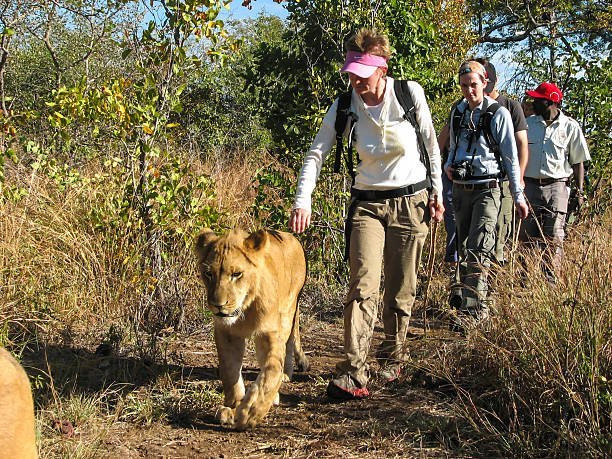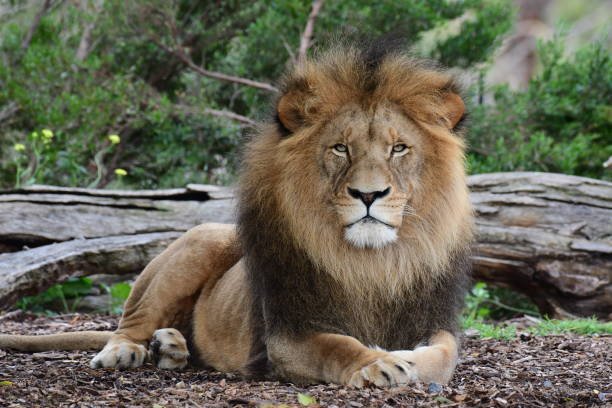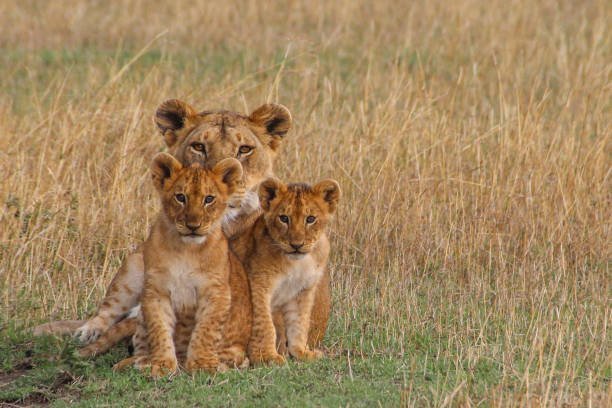Can captive lions be successfully reintroduced into the wild through rescue efforts?

Introduction:
In this article, we embark on a critical exploration The practice of rescuing captive lions, often bred in captivity for various purposes, raises significant ethical and ecological questions. Reintroducing these animals to their natural habitats is a complex process, involving behavioral adaptation, health considerations, and environmental acclimatization. With diminishing wild lion populations and increasing instances of captive breeding, understanding the viability and challenges of reintroduction efforts becomes paramount.
This article delves into the scientific approaches, ethical dilemmas, and conservation implications surrounding captive lion reintroduction. By examining case studies and current research, we aim to unravel the complexities, shedding light on the potential successes and hurdles faced in the noble endeavor of returning captive lions to their rightful place in the wild.
Challenges in Captive Lion Reintroduction:
Reintroducing captive lions into the wild presents multifaceted challenges. One major hurdle is the psychological adjustment the lions must make. Captive lions often lack the essential survival skills instilled through natural upbringing, making them vulnerable in the wild. Moreover, their familiarity with humans can lead to risky interactions, potentially endangering both lions and local communities. Additionally, these lions might struggle to establish social hierarchies within existing wild pride, causing conflicts that can disrupt the balance of the ecosystem.
Conservationists face the challenge of preparing these animals to cope with the stresses of the wild, ensuring their ability to hunt, navigate complex terrain, and integrate socially. Addressing these challenges demands comprehensive behavioral analysis and specialized training protocols tailored to individual lions, aiming to bridge the gap between captive upbringing and the demands of the wild environment.
Behavioral Adaptations for Wild Reintegration:
Successful lion reintroduction necessitates extensive behavioral adaptations. Lions bred in captivity may lack the instincts vital for survival, such as hunting, territorial behavior, and social interactions essential for integration into wild pride. Behavioral experts work on honing these skills, employing techniques like simulated hunting exercises and interaction with prey scents to stimulate natural behaviors. Socialization with other lions, often involving wild-born mentors, plays a pivotal role in fostering appropriate social dynamics.
Enclosure design also becomes crucial, allowing limited human contact and encouraging natural activities. Through meticulous observation and gradual exposure to the wild, captive lions can adapt their behavior, increasing their chances of successful reintegration.
Health Considerations and Veterinary Support:
The health and well-being of captive lions are paramount during reintroduction efforts. Pre-release health assessments are crucial, involving comprehensive veterinary checks to identify and address potential diseases or conditions that could jeopardize the animal’s survival. Adequate vaccinations, parasite control, and disease screening are imperative to prevent the spread of infections to wild populations.
Moreover, proper nutrition and physical conditioning are vital to bolster the lions’ immune systems and overall health. Close post-release monitoring, involving tracking collars and regular health checks, ensures their adaptation to the wild environment. Veterinary support also extends to addressing injuries sustained during the reintroduction process. Immediate medical attention and, if necessary, temporary removal for rehabilitation are essential to safeguard the lion’s well-being and increase its chances of thriving in the wild habitat.
Environmental Acclimatization:
Reintroducing captive lions into the wild demands meticulous attention to environmental acclimatization and habitat restoration. The released lions must adapt to the specific ecosystem, including its flora, fauna, and terrain. Proper acclimatization involves ensuring that the lions can navigate natural landscapes, find water sources, and identify prey.
It also necessitates familiarizing them with the sights, sounds, and smells of the wild, which significantly differ from the controlled environment of captivity. Additionally, habitat restoration is vital. It involves not only protecting the immediate release area but also addressing larger ecological concerns such as deforestation, water scarcity, and declining prey populations. Restoration efforts can include reforestation projects, wildlife corridor establishment, and prey animal population management. By ensuring that the environment is conducive to supporting lions and their prey, successful acclimatization becomes more feasible.
Stakeholder Perspectives:
Reintroduction efforts must navigate complex ethical concerns and incorporate diverse stakeholder perspectives. Ethical dilemmas arise concerning the impact of reintroduced lions on existing wild populations. Introducing captive-bred lions can potentially introduce diseases or disrupt existing social structures, leading to unforeseen consequences.
Ethical considerations also extend to the moral obligation of ensuring that these animals are not subjected to undue suffering during the reintroduction process. Moreover, the perspectives of local communities, conservation organizations, and animal welfare advocates play a crucial role. Addressing concerns and involving these stakeholders in decision-making processes is essential for the ethical viability of any reintroduction initiative. Public awareness and education regarding the ethical dimensions of such programs are equally important, fostering a sense of collective responsibility towards wildlife conservation.
Conservation Impact and Long-Term Sustainability:
The conservation impact of reintroducing captive lions into the wild is a multifaceted consideration. While it might contribute to the genetic diversity of existing wild populations, it also raises questions about the authenticity of these populations. Introducing captive-bred individuals can dilute the genetic integrity of wild lions, impacting their evolutionary potential. Additionally, assessing the long-term sustainability of such efforts is crucial.
Conservation initiatives must consider the lions’ ability to adapt and reproduce in the wild independently. Monitoring their behavior, reproductive success, and overall survival rates over extended periods provides valuable data to evaluate the sustainability of the reintroduction program. Moreover, conservation impact also encompasses the broader ecological implications, including the influence of lions on prey populations and vegetation dynamics. Ensuring that reintroduced lions contribute positively to the overall ecosystem’s health and biodiversity is pivotal for the long-term success and sustainability of any reintroduction endeavor.
Conclusion:
I hope this exploration sheds light on the intricate challenges and ethical considerations surrounding the reintroduction of captive lions into the wild. From behavioral adaptations to environmental acclimatization, each step demands meticulous planning and execution. The involvement of diverse stakeholders and local communities is essential, bridging the gap between conservation efforts and ethical concerns.
While the idea of reintroducing captive lions carries significant potential for conservation, it’s imperative to balance the desire to save individual animals with the preservation of wild populations’ genetic integrity and ecological balance. As we move forward, I hope that future initiatives emphasize holistic habitat restoration, sustainable conservation impact, and an unwavering commitment to the ethical treatment of these majestic creatures. Only through a comprehensive, thoughtful approach can we ensure the long-term success of rescue efforts and the thriving coexistence of lions in their natural habitats.










Post Comment